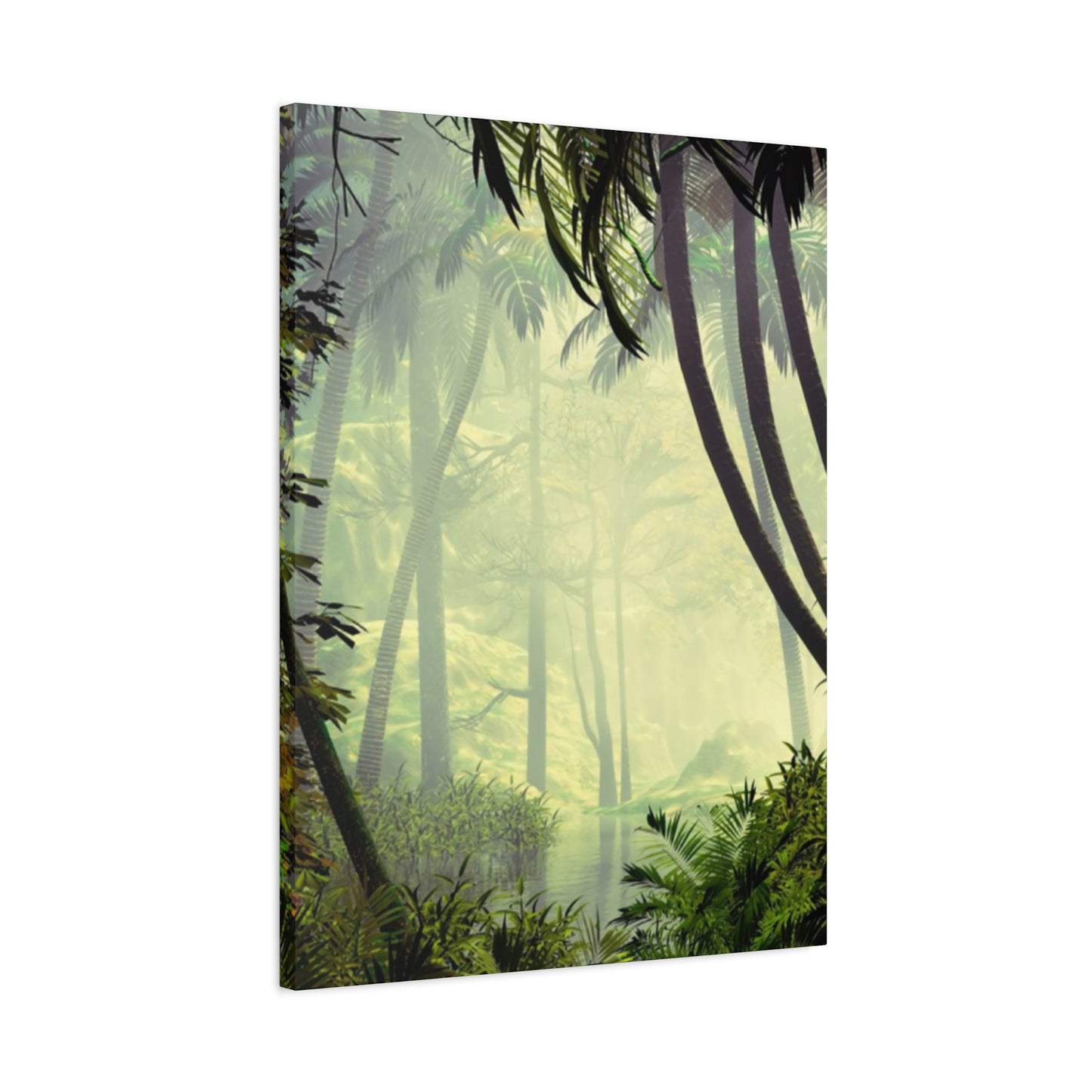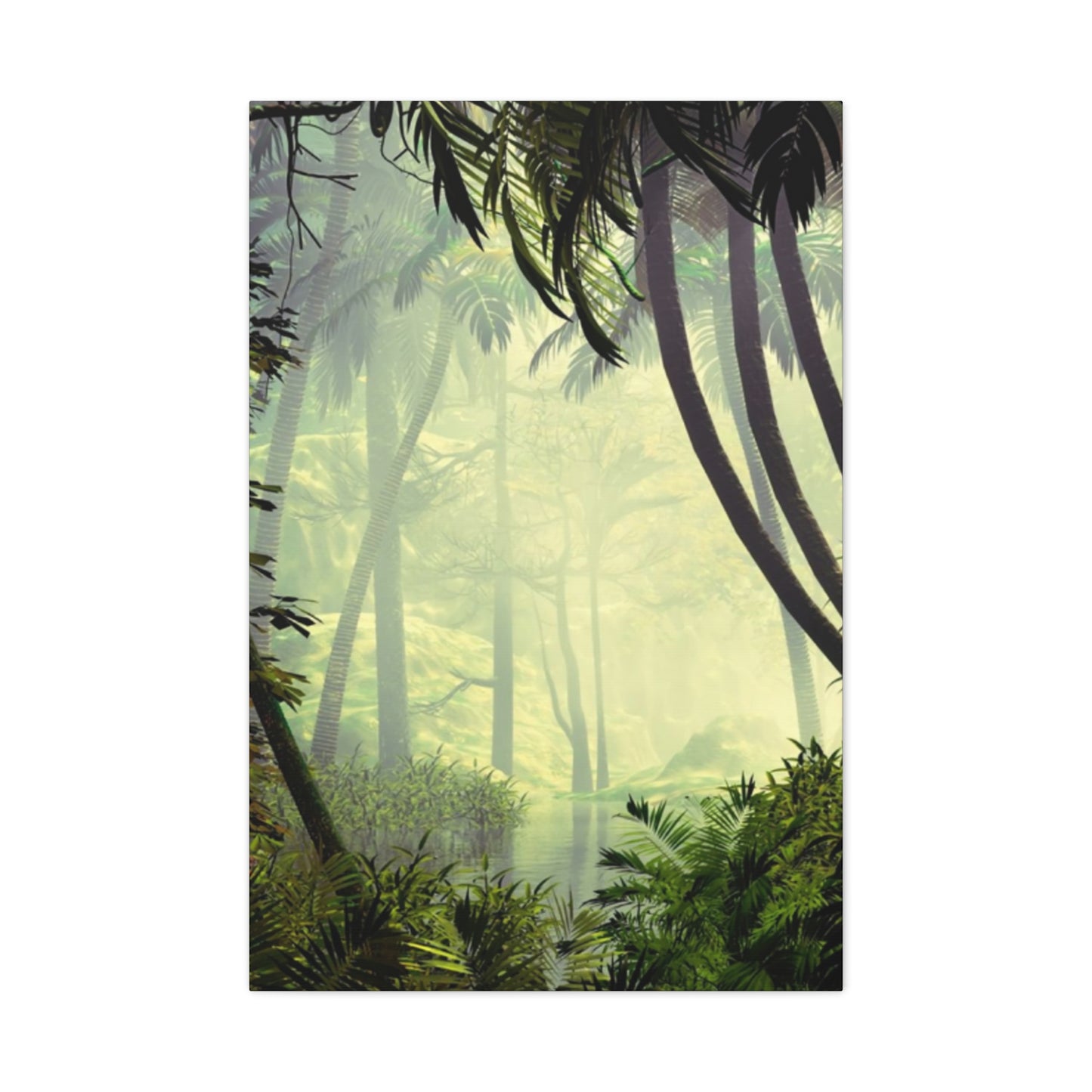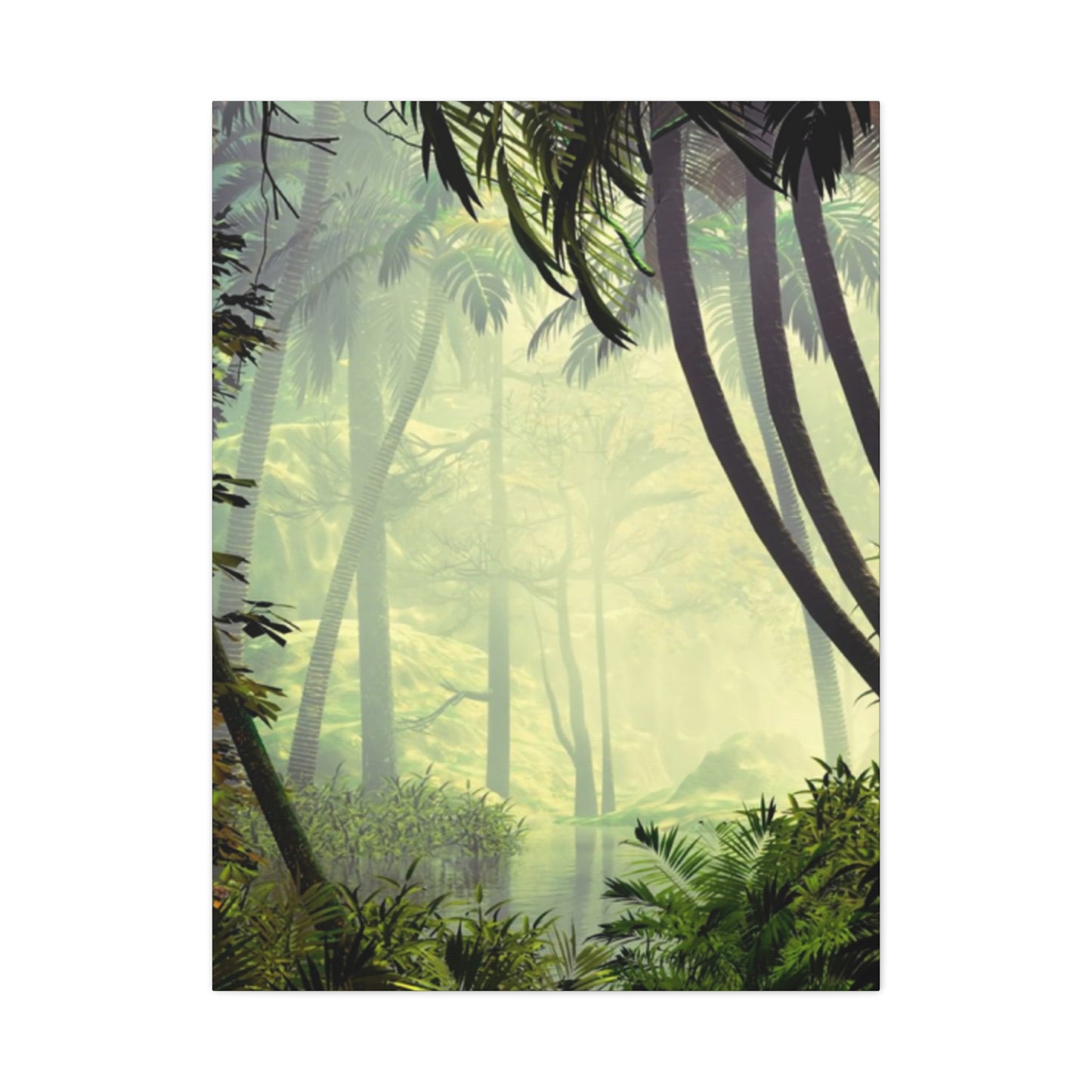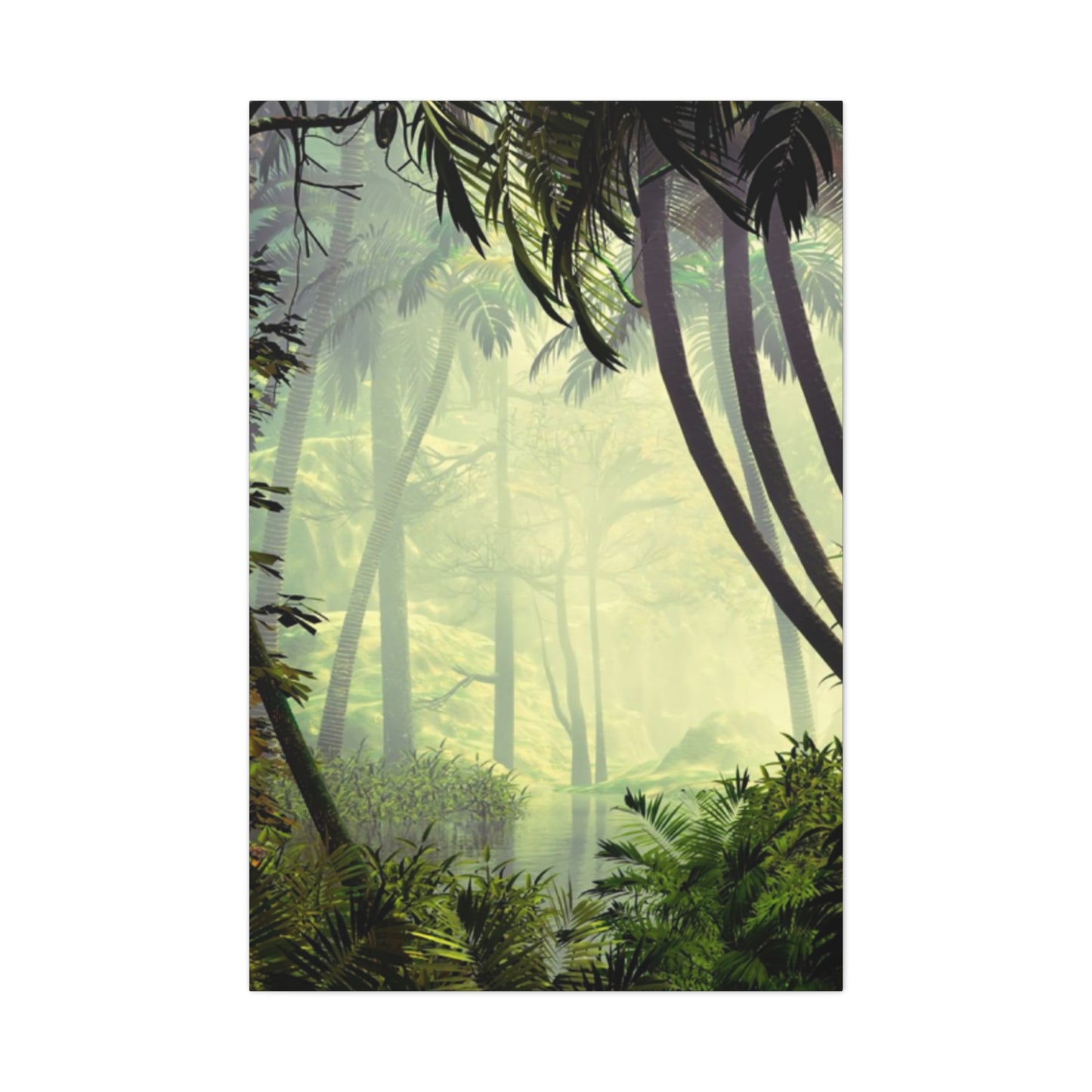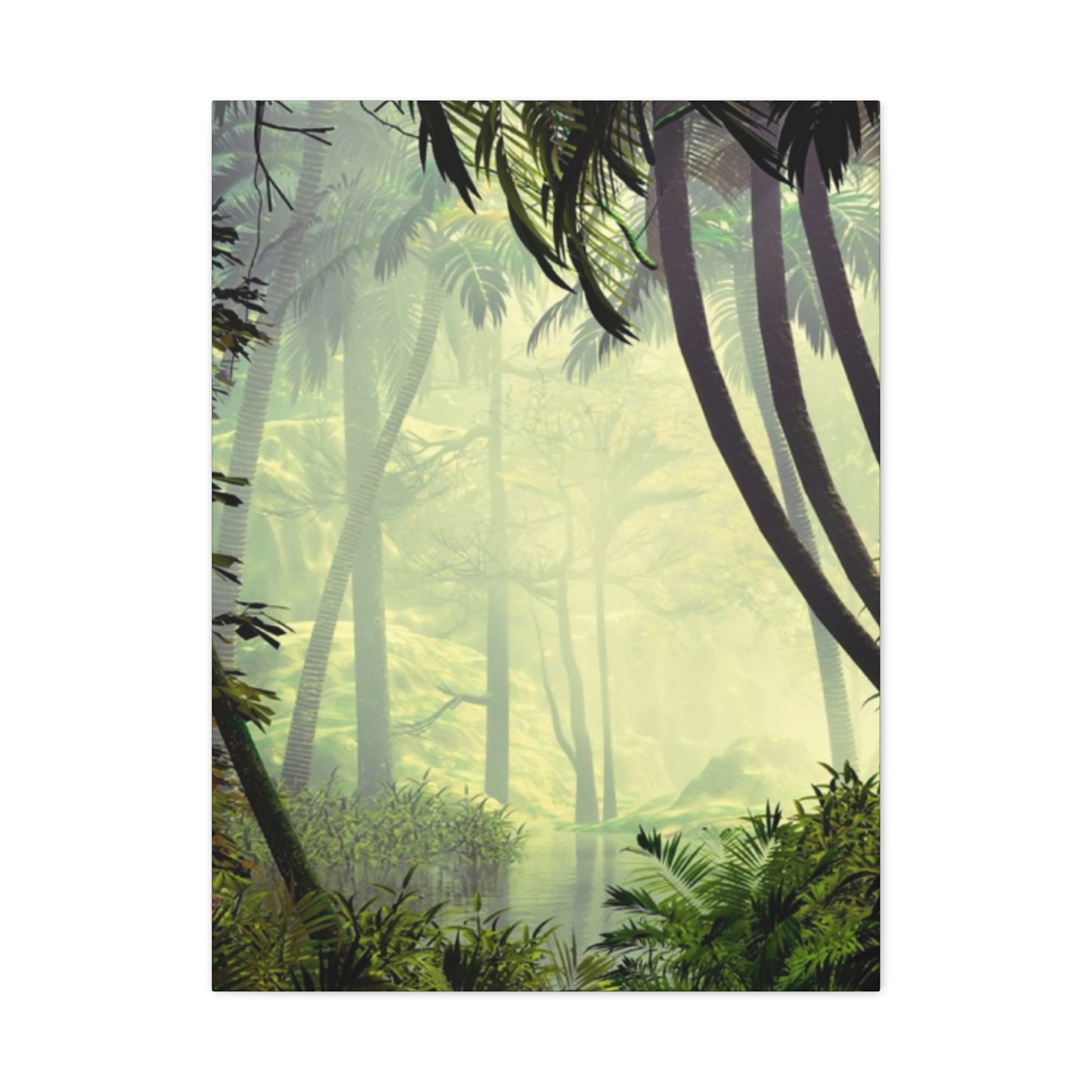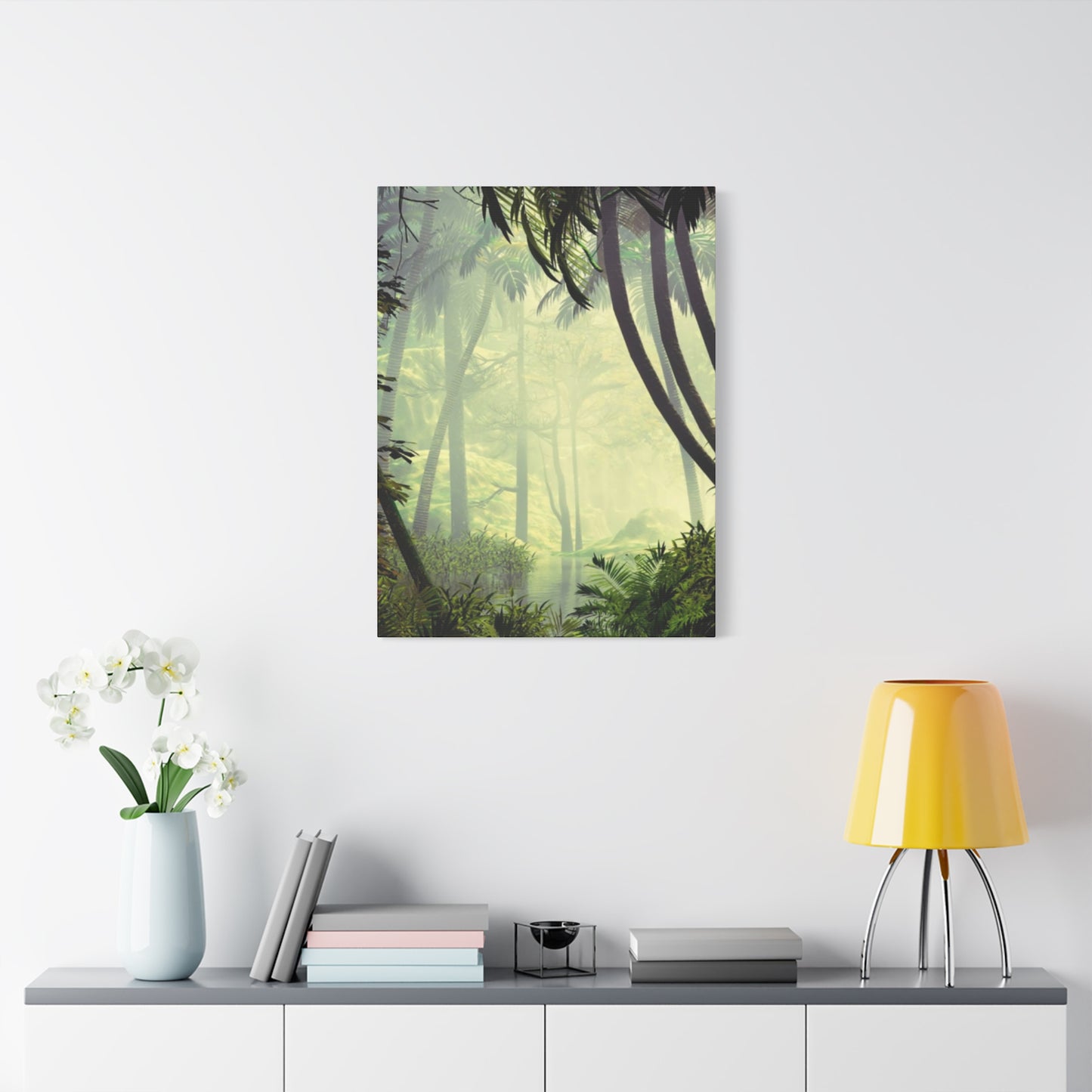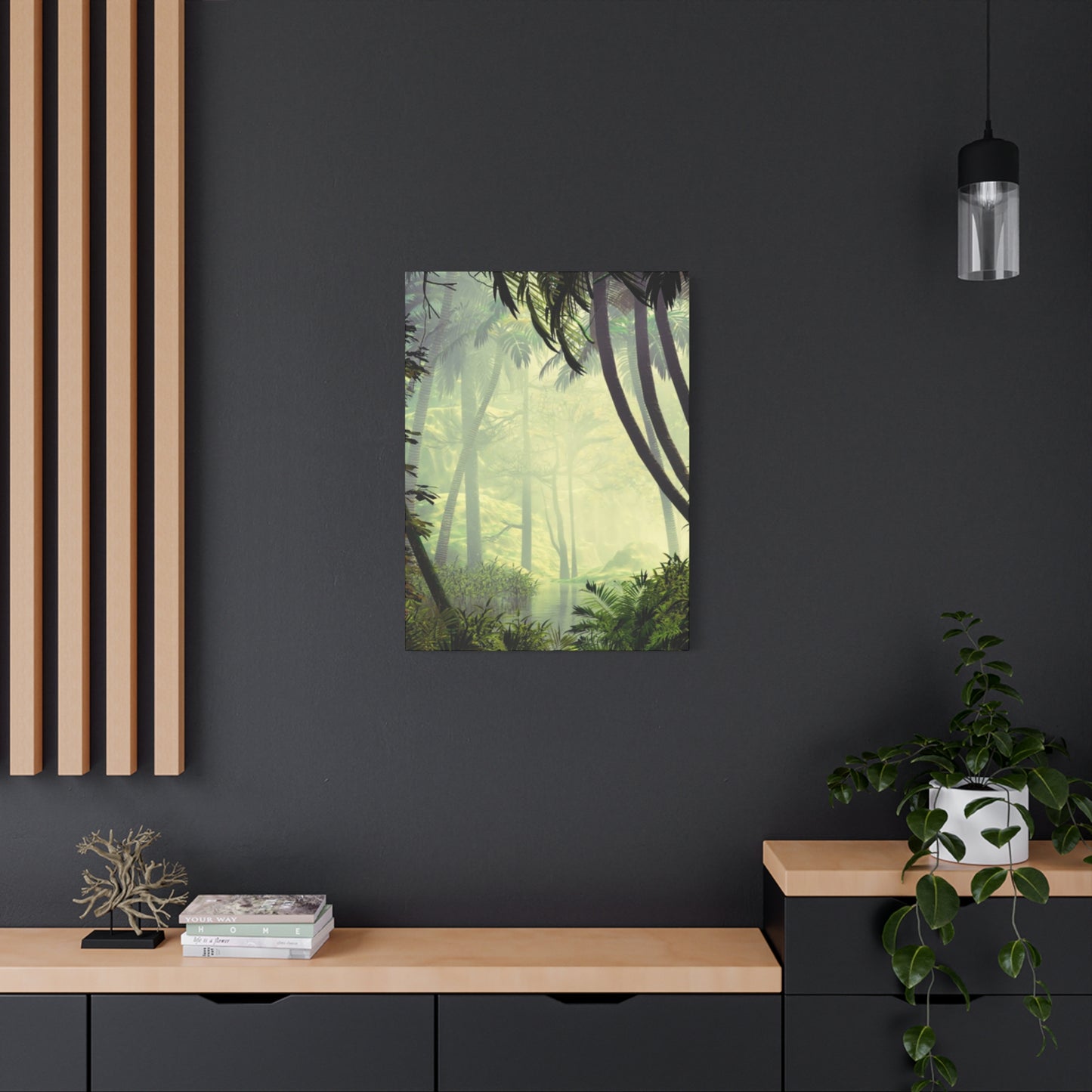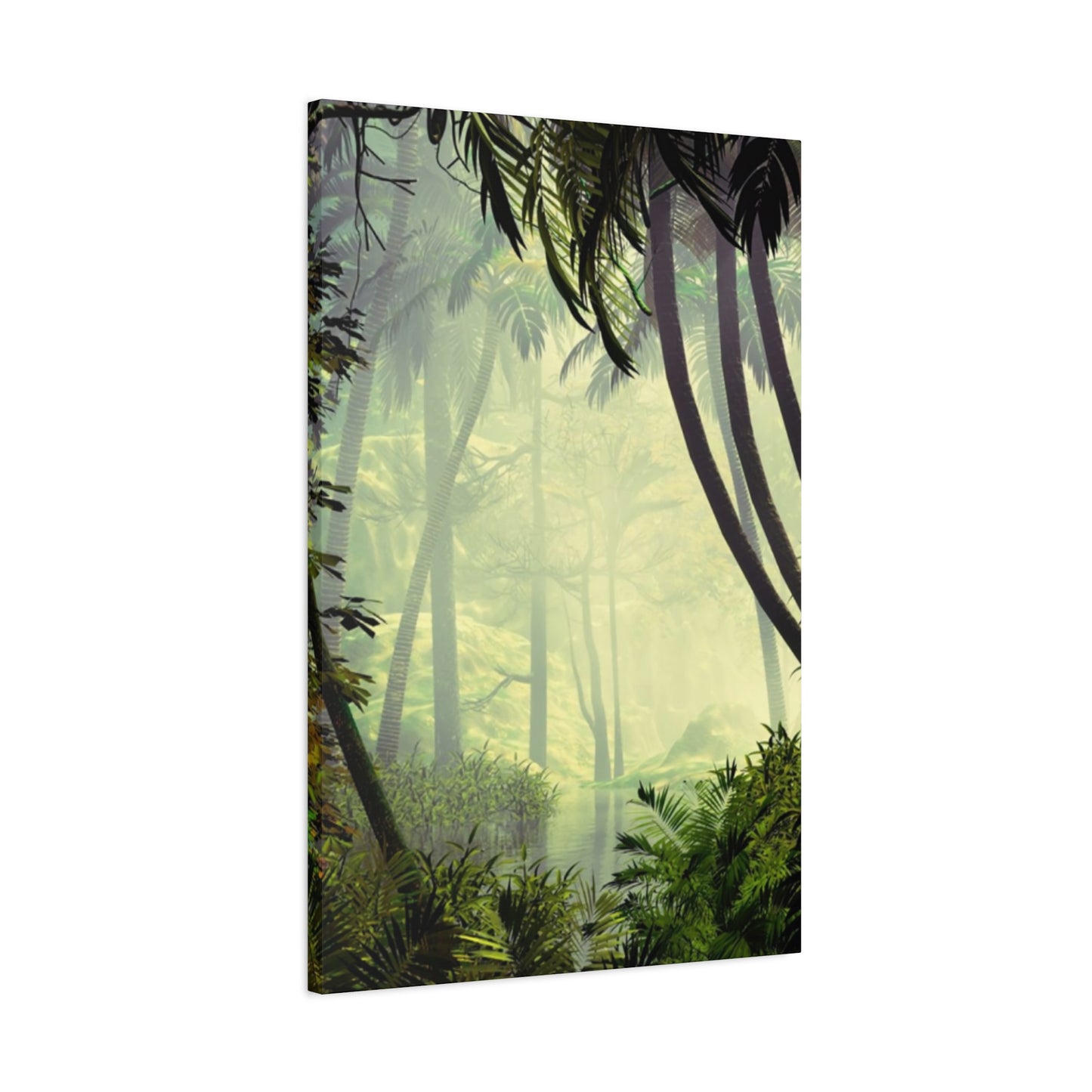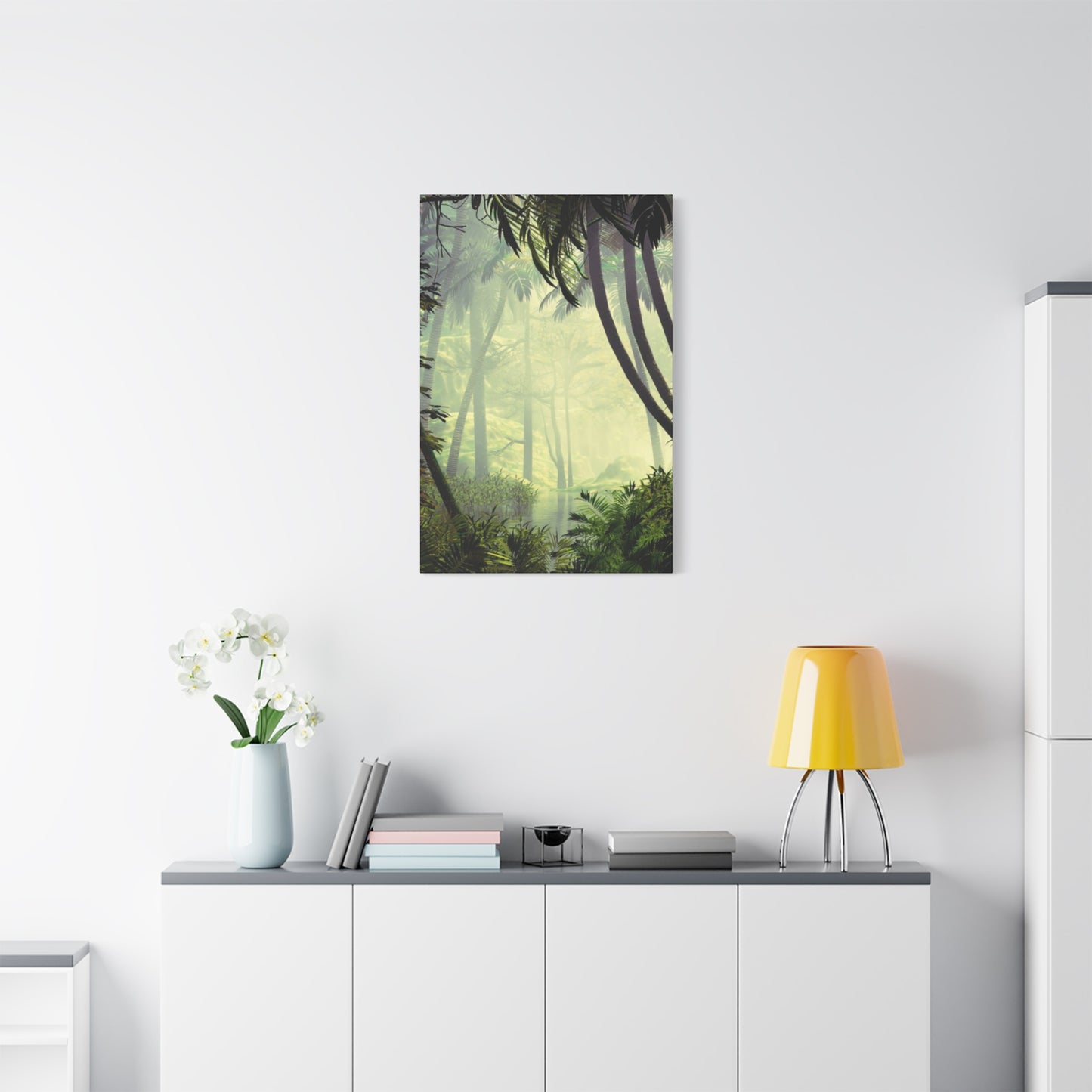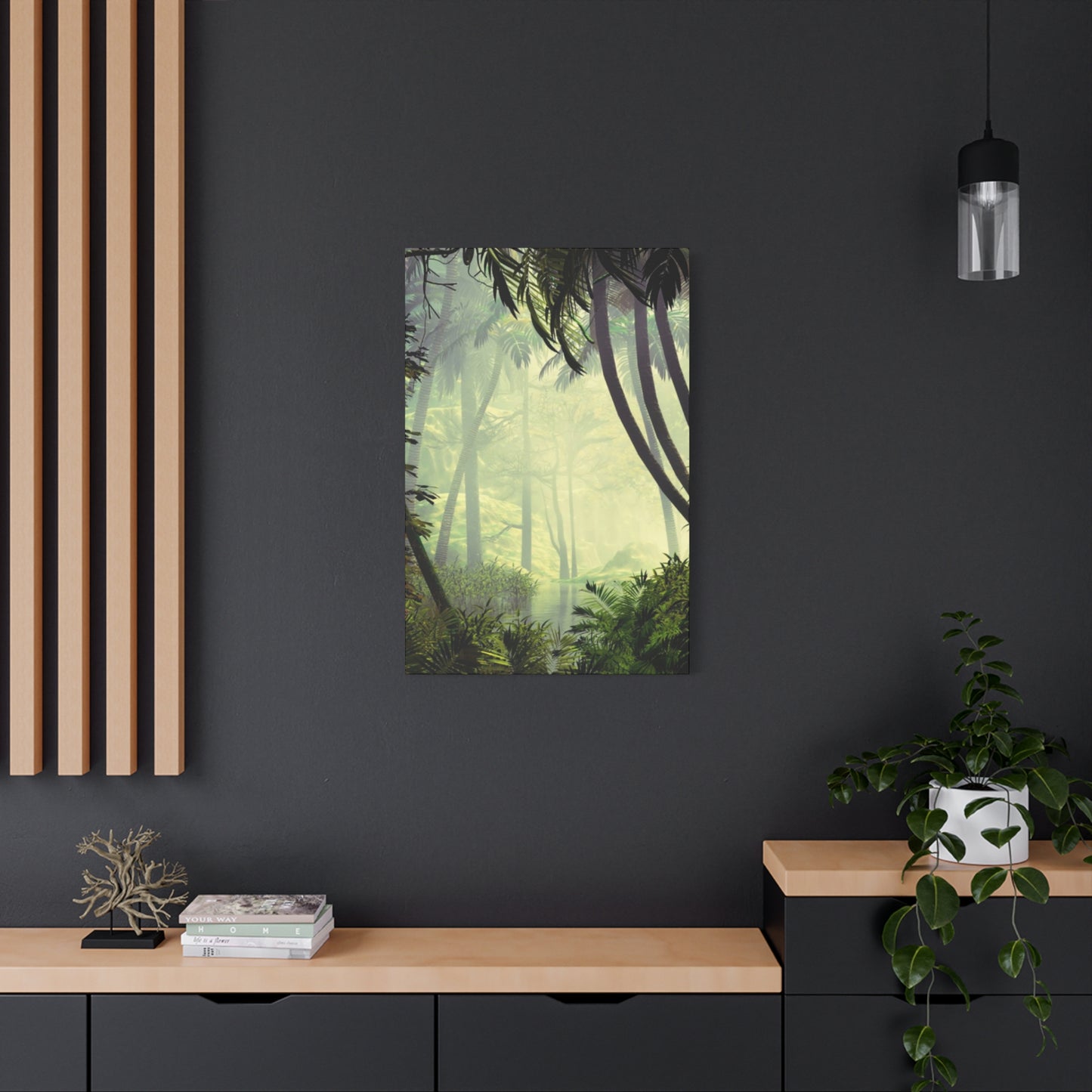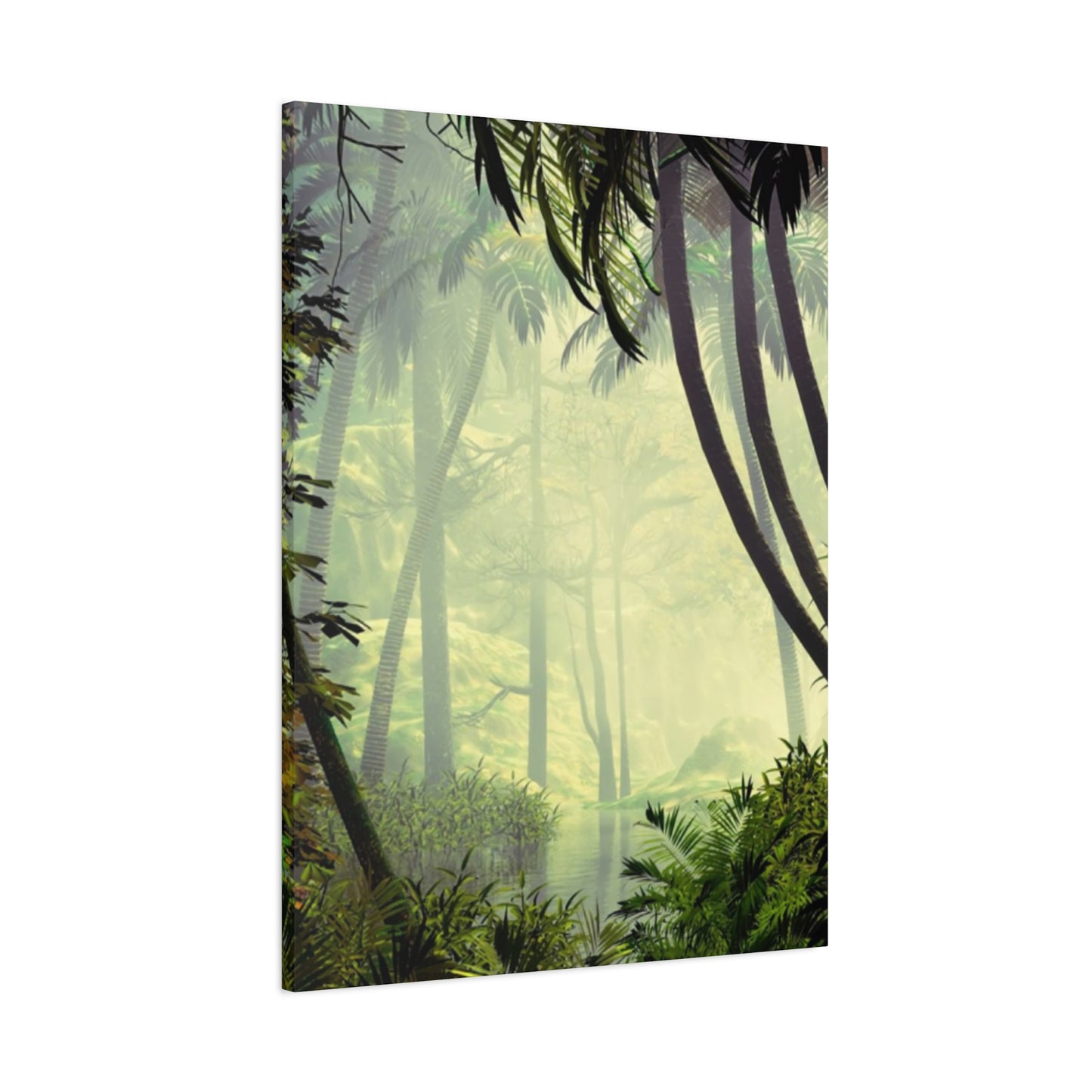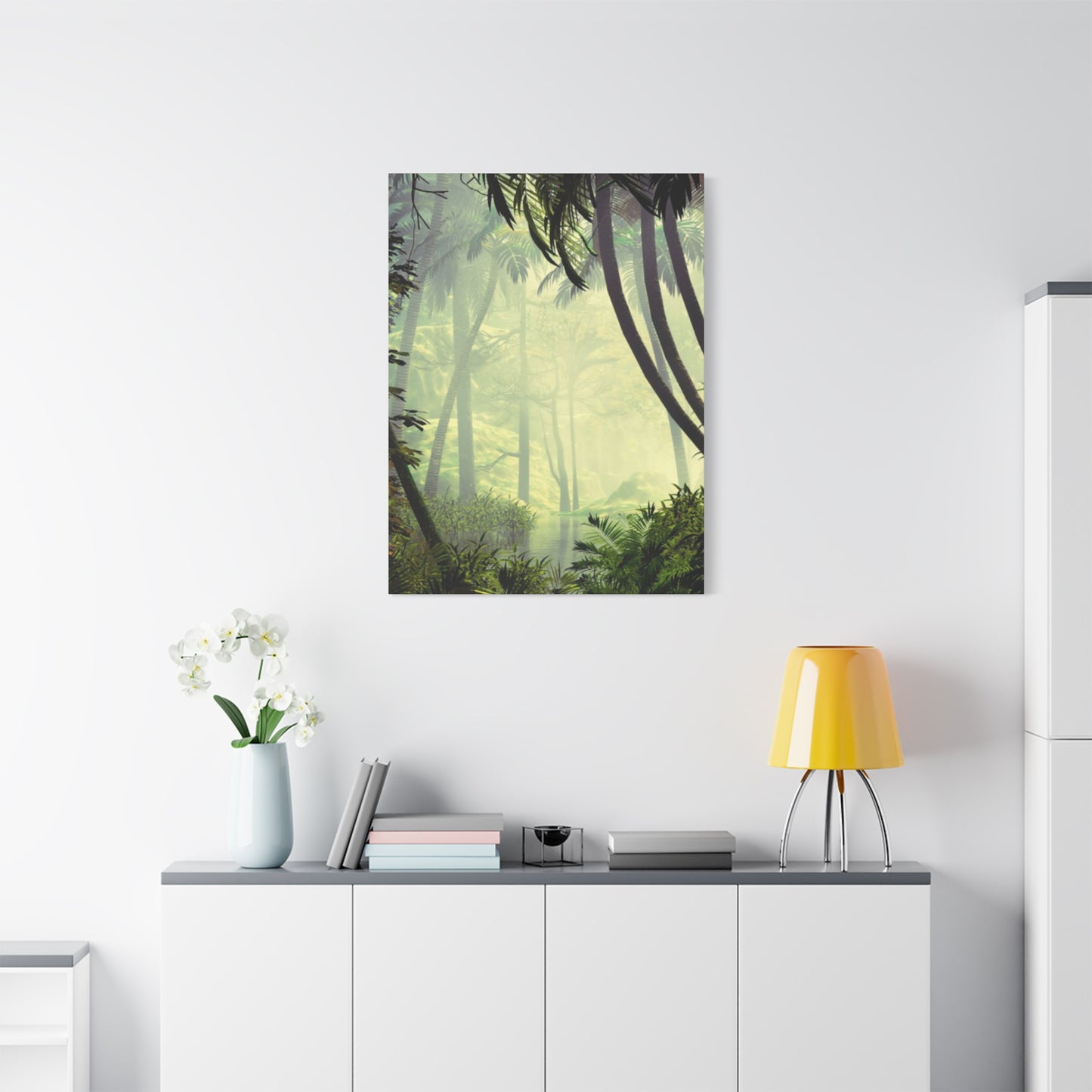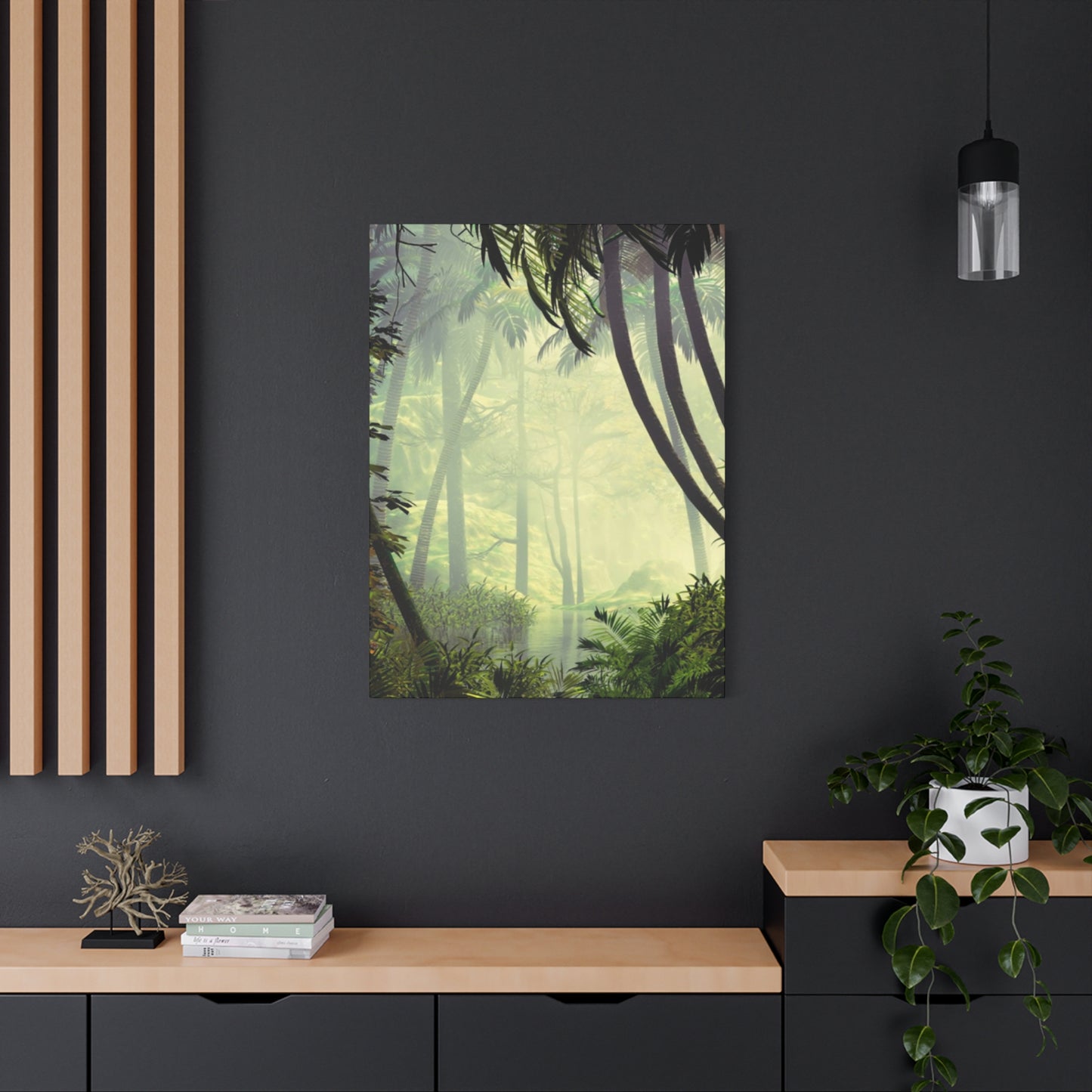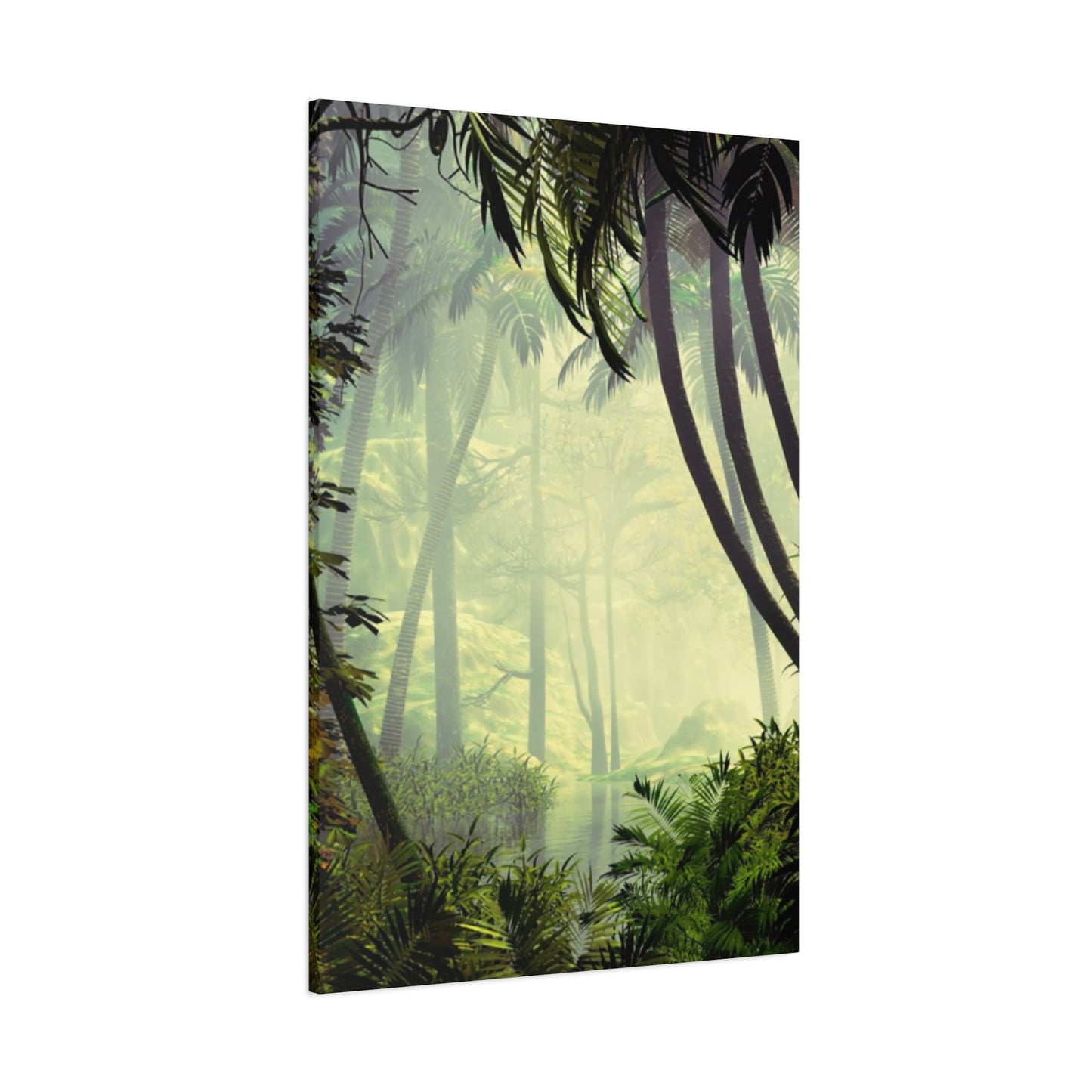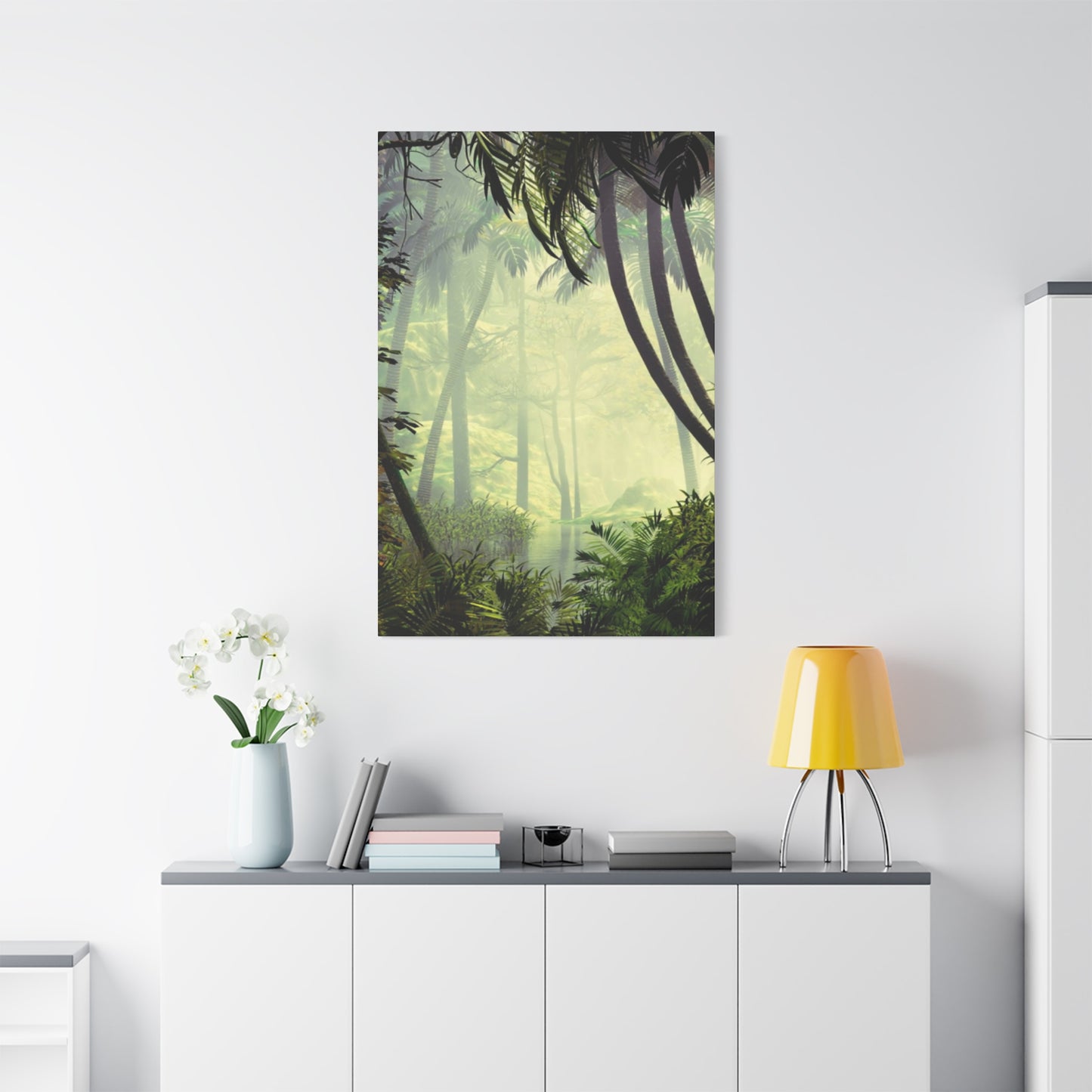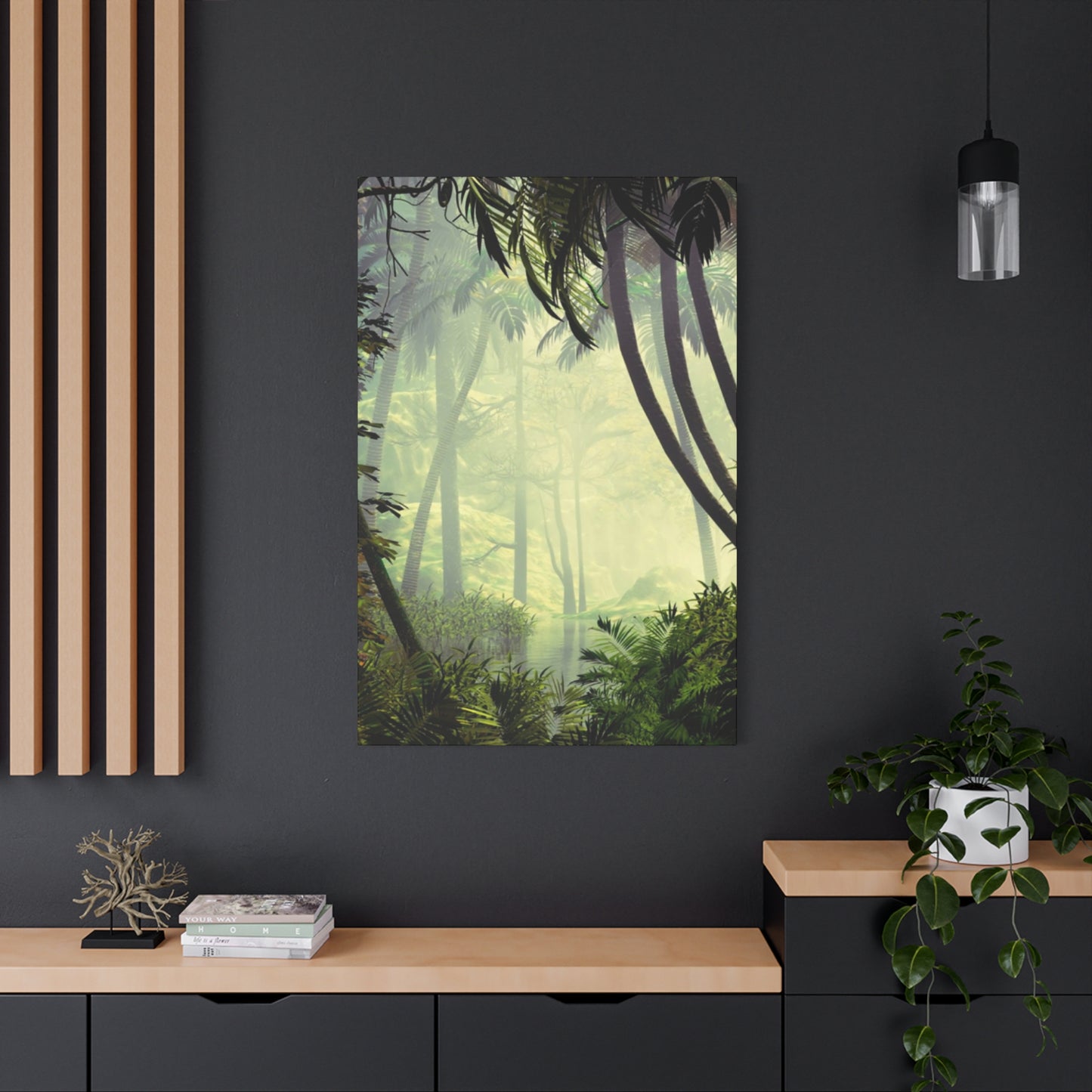Captivating Rain Forest Wall Art: Creative Ideas to Transform Your Living Environment
The allure of tropical rainforests has captivated humanity for centuries, with their dense canopies, exotic wildlife, and mysterious atmospheres creating an almost magical appeal. Rain forest wall art brings this enchanting natural world directly into our homes, offering a powerful way to connect with nature without leaving our comfort zones. These artistic representations serve as windows into some of Earth's most biodiverse ecosystems, allowing us to experience the beauty, complexity, and wonder of tropical environments through carefully crafted visual displays.
Rain forest wall art encompasses a vast spectrum of artistic expressions, from photographic prints capturing the intricate details of jungle life to abstract paintings that evoke the emotional essence of these verdant landscapes. The popularity of such artwork has grown exponentially in recent years, driven by increasing environmental awareness, biophilic design trends, and a collective yearning to reconnect with the natural world in our increasingly urbanized society.
The psychological benefits of incorporating natural imagery into our living environments are well-documented. Studies have shown that exposure to representations of nature can reduce stress levels, improve mood, enhance creativity, and promote overall well-being. Rain forest wall art specifically offers viewers a sense of adventure, mystery, and tranquility simultaneously, creating an immersive experience that can transport minds to distant tropical realms.
When considering rain forest wall art for your home or office, it's essential to understand the various forms this artistic expression can take. From traditional canvas paintings depicting lush jungle scenes to contemporary digital prints featuring macro photography of exotic flora and fauna, the options are virtually limitless. Three-dimensional installations, sculptural elements, and mixed-media pieces add depth and texture to any environment, while photographic series can tell compelling stories about rainforest conservation and biodiversity.
The versatility of rain forest wall art makes it suitable for numerous applications and settings. Whether you're looking to create a calming retreat in your bedroom, an inspiring focal point in your living area, or a conversation starter in your office, these natural-themed artworks can adapt to various aesthetic preferences and functional requirements. The key lies in selecting pieces that complement your existing décor while achieving your desired emotional and visual impact.
Color palettes in rain forest wall art typically revolve around rich greens, earthy browns, vibrant flower hues, and the deep shadows that characterize dense jungle environments. However, contemporary artists have expanded these traditional color schemes to include more abstract interpretations, incorporating unexpected color combinations and artistic techniques that maintain the essence of rainforest environments while offering fresh, modern perspectives.
Beautiful Rain Forest Wall Art Ideas for Every Home
Creating stunning visual displays with rain forest wall art requires careful consideration of composition, scale, and thematic coherence. One of the most effective approaches involves developing gallery walls that combine multiple pieces to tell a comprehensive story about rainforest ecosystems. These collections might include photographs of towering trees, detailed botanical illustrations, wildlife portraits, and atmospheric landscape scenes that work together to create an immersive viewing experience.
Large-scale statement pieces can serve as dramatic focal points in spacious rooms. A massive canvas depicting a misty rainforest canopy or a detailed mural showcasing the layers of jungle vegetation can instantly transform any room into a tropical sanctuary. These oversized artworks work particularly well in areas with high ceilings, where their impressive dimensions can be fully appreciated without overwhelming the surrounding elements.
Triptych and multi-panel arrangements offer another compelling approach to displaying rain forest wall art. These segmented compositions allow viewers to experience different aspects of rainforest environments simultaneously, perhaps showing the forest floor, understory, and canopy levels in separate panels. This format creates visual rhythm and movement while providing opportunities to incorporate varying artistic styles and techniques within a cohesive presentation.
Photographic series focusing on specific rainforest themes can create powerful narrative displays. Collections might explore endangered species, medicinal plants, indigenous communities, or conservation efforts, combining artistic beauty with educational value. These thematic groupings work exceptionally well in educational settings, offices focused on environmental initiatives, or homes where residents are passionate about conservation issues.
Abstract interpretations of rainforest environments offer opportunities to incorporate bold colors, dynamic compositions, and contemporary artistic techniques while maintaining connections to natural themes. These pieces can include stylized representations of jungle textures, color studies inspired by tropical flowers, or geometric interpretations of forest patterns. Abstract rain forest wall art particularly appeals to those who prefer modern aesthetics while still wanting to incorporate natural elements into their environments.
Mixed-media installations combining traditional artwork with three-dimensional elements can create truly immersive experiences. These might include paintings enhanced with sculptural vines, photographs combined with preserved botanical specimens, or digital displays integrated with natural materials. Such installations blur the boundaries between art and environment, creating living galleries that evolve and change over time.
Seasonal rotations of rain forest wall art can keep environments fresh and engaging throughout the year. Different collections might emphasize various aspects of rainforest life, such as flowering seasons, animal migrations, or atmospheric conditions. This approach allows residents to experience ongoing connections with natural cycles while maintaining visual interest in their living environments.
The integration of lighting plays a crucial role in maximizing the impact of rain forest wall art. Proper illumination can enhance colors, create depth, and establish mood while protecting valuable artworks from damage. LED lighting systems offer energy-efficient solutions that can be programmed to change throughout the day, mimicking the natural light patterns found in actual rainforest environments.
Current Trends in Rain Forest Wall Decor
The contemporary market for rain forest wall decor reflects broader design trends emphasizing sustainability, wellness, and environmental consciousness. One of the most significant developments has been the rise of eco-friendly production methods, with artists and manufacturers increasingly using sustainable materials, non-toxic inks, and environmentally responsible manufacturing processes. This alignment between artistic content and production methods appeals to environmentally conscious consumers who want their purchasing decisions to reflect their values.
Digital photography and printing technologies have revolutionized the quality and accessibility of rain forest wall art. High-resolution cameras can now capture incredible detail in challenging jungle lighting conditions, while advanced printing techniques can reproduce these images with stunning clarity and color accuracy. This technological advancement has made museum-quality rainforest photography available to broader audiences at various price points.
Augmented reality and interactive technologies are beginning to influence rain forest wall art, with some installations incorporating QR codes that link to educational content, wildlife sounds, or documentary footage. These hybrid experiences combine traditional visual art with digital information, creating multi-sensory educational opportunities that particularly appeal to younger generations and technology-embracing demographics.
Biophilic design principles have significantly influenced current trends in rain forest wall decor. This design philosophy emphasizes the human connection to nature and seeks to incorporate natural elements into built environments. Rain forest wall art serves as a key component in biophilic design schemes, often combined with living walls, natural materials, and organic shapes to create holistic environments that support human well-being.
Customization and personalization have become increasingly important in the rain forest wall art market. Many consumers now seek unique pieces that reflect their specific interests, travel experiences, or conservation commitments. Artists and suppliers are responding with custom photography services, personalized prints, and bespoke installations that create one-of-a-kind artistic experiences.
The influence of social media platforms has shaped both the creation and consumption of rain forest wall art. Instagram-worthy installations and photogenic gallery walls have become design priorities, influencing how artists compose their work and how consumers arrange their collections. This trend has led to more dramatic, high-contrast pieces designed to photograph well under various lighting conditions.
Minimalist approaches to rain forest wall art have gained popularity, particularly among consumers who appreciate clean, uncluttered aesthetics. These designs might focus on single species, simple compositions, or monochromatic color schemes while still maintaining connections to rainforest themes. This trend reflects broader design movements toward simplicity and mindfulness.
The vintage and retro revival has influenced rain forest wall art through renewed interest in botanical illustrations, vintage travel posters, and historical expedition artwork. These pieces offer connections to past eras of exploration and scientific discovery while providing sophisticated, timeless aesthetic appeal that transcends contemporary design trends.
Collaborative artworks featuring multiple artists or combining artistic disciplines have become increasingly common. These projects might involve photographers working with painters, scientists collaborating with artists, or indigenous communities partnering with contemporary creators to produce authentic, culturally sensitive representations of rainforest environments.
Bringing Nature Indoors Through Rain Forest Art
The practice of bringing natural elements into indoor environments addresses fundamental human psychological needs that developed over millennia of evolution in natural settings. Rain forest art serves as a powerful medium for satisfying these biophilic tendencies, creating visual connections to the natural world that can significantly impact mood, productivity, and overall well-being. The complex visual textures, organic forms, and rich color palettes found in rainforest imagery provide the visual complexity and variation that human brains find inherently engaging and restorative.
Scientific research has consistently demonstrated that exposure to natural imagery can reduce cortisol levels, lower blood pressure, and improve cognitive function. Rain forest wall art, with its intricate details and calming natural scenes, can provide these benefits even in urban environments where direct access to nature may be limited. The layered complexity of rainforest imagery mirrors the visual richness of natural environments, providing the kind of "soft fascination" that researchers believe is essential for mental restoration and stress recovery.
The seasonal and temporal aspects of rainforest environments offer opportunities to create dynamic indoor experiences that change and evolve over time. Digital displays can show different aspects of rainforest life throughout the day, while rotating collections of static artwork can reflect seasonal changes or highlight different aspects of forest ecosystems. This temporal variation helps prevent the visual habituation that can occur with static displays, maintaining the psychological benefits of natural imagery over extended periods.
Color therapy principles support the use of rain forest wall art in various functional settings. The predominant green hues found in forest imagery are associated with balance, harmony, and emotional stability, making these artworks particularly suitable for bedrooms, meditation areas, and other locations where relaxation is prioritized. The occasional bursts of bright colors from flowers, birds, and other rainforest elements can provide energizing accents that stimulate creativity and positive emotions.
The scale and proportions of rainforest environments can be particularly effective in small or confined indoor areas. Large-scale artwork depicting vast forest vistas can create illusions of expanded visual depth, making cramped rooms feel more spacious and open. Conversely, detailed close-up images of rainforest elements can add intimacy and interest to larger rooms that might otherwise feel impersonal or sterile.
Air quality and environmental factors play important roles in how effectively rain forest wall art can bring nature indoors. Combining natural artwork with actual plants, natural materials, and proper ventilation creates synergistic effects that enhance the overall biophilic impact. The visual suggestion of fresh, clean forest air provided by rainforest imagery can psychologically reinforce the physical benefits of improved indoor air quality.
Educational components integrated with rain forest wall art can deepen the connection between viewers and natural environments. Information about depicted species, conservation status, ecological relationships, and cultural significance can transform passive viewing into active learning experiences. This educational dimension is particularly valuable for children, helping them develop environmental awareness and appreciation for biodiversity.
The acoustic dimension of bringing nature indoors through rain forest art can be enhanced through complementary sound elements. Recordings of rainforest soundscapes, including bird calls, insect sounds, and weather patterns, can create multi-sensory experiences that transport viewers more completely into forest environments. These audio elements should be subtle and adjustable to avoid overwhelming or distracting from the visual artwork.
Selecting the Perfect Rain Forest Art for Your Room
The process of choosing appropriate rain forest wall art requires careful consideration of multiple factors including room function, existing décor, lighting conditions, and personal preferences. Different rooms serve different purposes and create different moods, necessitating thoughtful selection of artwork that supports and enhances each environment's intended use. The size, color palette, subject matter, and artistic style of rain forest wall art should all align with the specific characteristics and requirements of each room.
Living rooms and common areas benefit from rain forest wall art that encourages conversation and creates welcoming atmospheres. Large-scale landscape pieces depicting expansive forest vistas can serve as stunning focal points while encouraging relaxation and social interaction. Wildlife portraits, particularly those featuring charismatic megafauna like jaguars, toucans, or monkeys, often spark conversations and create memorable impressions on visitors. The artwork in these areas should be visible and impactful from multiple viewing angles and distances.
Bedroom environments require more careful consideration of psychological impact and color relationships. Rain forest wall art for bedrooms should emphasize tranquility, serenity, and restoration. Misty morning forest scenes, gentle waterfall imagery, or soft-focus botanical studies create calming influences that support rest and relaxation. Avoid overly stimulating colors or dramatic wildlife scenes that might create excitement rather than promoting sleep. The positioning of artwork in bedrooms should consider viewing angles from the bed and ensure that pieces remain visible and enjoyable during quiet, contemplative moments.
Kitchen and dining areas can accommodate more vibrant and energetic rain forest wall art that stimulates appetite and creates lively atmospheres. Fruit and flower imagery, colorful bird photography, or artistic representations of edible rainforest plants can create thematic connections between the artwork and the room's function. These areas often have unique lighting challenges due to task lighting and varying natural light throughout the day, requiring artwork that performs well under different illumination conditions.
Home office environments benefit from rain forest wall art that promotes creativity, concentration, and positive mood without creating distraction. Abstract interpretations of forest patterns, minimalist botanical studies, or sophisticated landscape photography can provide visual interest and psychological benefits without overwhelming work-focused activities. The placement of artwork in offices should consider computer screen positioning, lighting reflection, and the need to maintain professional atmospheres during video conferences.
Bathroom environments present unique challenges for rain forest wall art due to humidity, temperature fluctuations, and limited wall space. Moisture-resistant materials and protective framing become essential considerations. Tropical themes work particularly well in bathrooms, with palm fronds, tropical flowers, or steamy jungle scenes creating spa-like atmospheres. The intimate scale of most bathroom settings favors smaller, more detailed pieces that can be appreciated during personal care routines.
Children's rooms require special consideration of age-appropriate content, educational value, and developmental impact. Rain forest wall art for young children might emphasize friendly animal characters, bright colors, and simple compositions that stimulate imagination without creating fear or anxiety. Educational elements such as species identification, habitat information, or conservation messages can grow with children and provide ongoing learning opportunities.
Guest rooms and secondary bedrooms offer opportunities to create memorable impressions while accommodating diverse aesthetic preferences. Rain forest wall art in these areas can be more adventurous or experimental, showcasing unique pieces that might be too bold for primary living areas. These rooms often have fewer personal belongings competing for visual attention, allowing artwork to take center stage in creating room character and atmosphere.
The relationship between rain forest wall art and existing furniture, textiles, and decorative elements requires careful coordination to achieve cohesive design results. Wood furniture with natural grains can complement and enhance rainforest themes, while contemporary materials like metal and glass can create interesting contrasts that highlight the organic nature of the artwork. Textile selections should either harmonize with or deliberately contrast against the artwork's color palette to avoid visual confusion or competition.
Premium Materials for Rain Forest Wall Art
The selection of materials for rain forest wall art significantly impacts both aesthetic quality and long-term durability, making material choice a crucial consideration for collectors and decorators alike. Traditional canvas remains one of the most popular options due to its versatility, texture, and ability to showcase oil and acrylic paintings effectively. High-quality cotton or linen canvases provide excellent color reproduction and can withstand environmental changes while maintaining structural integrity over decades.
Photographic prints require specialized paper and ink considerations to achieve museum-quality results that accurately represent the subtle colors and intricate details found in rainforest imagery. Archival photographic papers, including fiber-based and high-quality digital printing substrates, offer superior longevity and color stability compared to standard printing papers. The choice between matte, semi-gloss, and glossy finishes affects both the visual presentation and the viewing experience under different lighting conditions.
Metal substrates, particularly aluminum and steel, have gained popularity for contemporary rain forest wall art due to their modern aesthetic appeal and exceptional durability. These materials can produce vibrant colors with incredible depth and clarity while offering resistance to fading, moisture, and physical damage. The reflective properties of metal surfaces can enhance the luminous quality of rainforest imagery, creating dynamic viewing experiences that change with lighting conditions and viewing angles.
Acrylic mounting options provide another contemporary approach to displaying rain forest wall art with exceptional clarity and dimensional impact. High-quality acrylic materials offer UV resistance, impact resistance, and crystal-clear transparency that can make artwork appear to float within the mounting system. Face-mounting techniques can create seamless, gallery-quality presentations that protect artwork while eliminating reflective glare that might interfere with viewing.
Wood substrates offer unique opportunities to create harmonious relationships between rainforest artwork and natural materials. Bamboo, reclaimed hardwoods, and sustainably sourced timber can provide mounting surfaces that complement the environmental themes typically associated with rainforest imagery. The natural grain patterns and textures of wood substrates can enhance rather than compete with organic artwork subjects.
Glass mounting systems provide premium presentation options that offer exceptional protection while maintaining visual clarity. Museum-quality glass with UV filtering capabilities can prevent light damage while eliminating reflections that might interfere with artwork appreciation. Anti-reflective coatings and specialized glass types designed for artwork display ensure optimal viewing experiences under various lighting conditions.
Textile and fabric substrates open possibilities for incorporating rain forest wall art into soft furnishings and flexible display options. High-quality printing on canvas, silk, or synthetic fabrics can create hangings, room dividers, or portable artwork that can be easily reconfigured or relocated. These materials work particularly well for large-scale installations or temporary displays where traditional rigid mounting might be impractical.
Digital display technologies represent the cutting edge of rain forest wall art materials, offering opportunities for dynamic, changing presentations that can showcase multiple images or even video content. High-resolution LED displays, OLED panels, and projection systems can create immersive experiences that traditional static artwork cannot match. These technologies also enable interactive features, educational overlays, and real-time updates of rainforest imagery from remote locations.
Sustainable and eco-friendly material options align the physical production of rain forest wall art with the environmental themes typically depicted in the artwork itself. Recycled substrates, low-impact inks, renewable mounting materials, and locally sourced options can reduce the environmental footprint of artwork production while supporting the conservation messages often associated with rainforest imagery.
Frame selection represents another crucial material consideration that can dramatically impact the overall presentation and longevity of rain forest wall art. Natural wood frames can complement organic themes while providing traditional elegance, while contemporary metal frames offer sleek, minimalist presentations that don't compete with artwork content. Conservation-quality framing materials, including acid-free matting and spacers, ensure that valuable artwork remains protected from environmental damage over time.
Creative DIY Rain Forest Wall Art Projects
Developing your own rain forest wall art through do-it-yourself projects offers opportunities for creative expression, cost savings, and deeply personal connections to the artwork adorning your living environments. DIY approaches can range from simple modifications of existing prints to complex multi-media installations that incorporate various materials and techniques. The key to successful DIY rain forest wall art lies in careful planning, appropriate material selection, and realistic assessment of your skills and available tools.
Photography-based DIY projects can produce stunning results even with basic equipment and limited experience. Local botanical gardens, conservatories, and even houseplants can provide subject matter that captures the essence of rainforest environments without requiring expensive travel to exotic locations. Macro photography techniques can reveal intricate details in leaves, flowers, and textures that mirror the complexity found in actual rainforest settings. Basic photo editing software can enhance colors, adjust contrasts, and create artistic effects that transform simple photographs into compelling wall art.
Painting and drawing projects allow for complete creative control over color palettes, compositions, and artistic interpretation. Acrylic paints work particularly well for rainforest themes due to their vibrant colors, quick drying times, and versatility in creating both detailed realistic renderings and abstract interpretations. Watercolor techniques can capture the misty, atmospheric qualities often associated with rainforest environments, while mixed media approaches combining different materials can add texture and dimension to finished pieces.
Collage and mixed media techniques offer virtually unlimited possibilities for creating unique rain forest wall art from readily available materials. Magazine clippings, fabric scraps, natural materials like leaves and bark, and found objects can be combined to create layered compositions that tell complex stories about rainforest environments. These techniques work particularly well for collaborative family projects or educational activities that combine artistic creation with environmental learning.
Digital art creation using tablets, software applications, and computer programs has made sophisticated artistic techniques accessible to creators with various skill levels. Vector graphics programs can create stylized interpretations of rainforest elements, while digital painting applications can simulate traditional media while offering unique capabilities like unlimited color palettes and easily reversible modifications. Digital creation also enables easy scaling and reproduction of finished artwork for multiple display locations.
Botanical pressing and preservation techniques can create authentic rainforest wall art using actual plant materials. While access to tropical plants may be limited in some locations, many common houseplants and garden varieties can provide similar visual effects when properly prepared and displayed. Professional pressing techniques, archival mounting materials, and UV-protective framing can create museum-quality botanical displays that showcase the intricate beauty of plant structures.
Stenciling and template-based approaches can help less experienced artists achieve professional-looking results while building confidence and skills. Pre-made stencils featuring rainforest themes are commercially available, or custom stencils can be created using computer graphics and cutting tools. Layer stenciling techniques can build complex compositions gradually, allowing for color experimentation and design modifications throughout the creative process.
Three-dimensional sculptural projects can add depth and physical presence to rain forest wall art displays. Carved wood elements, metal sculptures, ceramic pieces, and mixed media installations can extend the visual impact beyond traditional flat artwork. These projects might require specialized tools and skills but can create truly unique and impressive results that serve as conversation centerpieces.
Fabric and textile arts offer opportunities to create soft, touchable rain forest wall art that adds warmth and texture to living environments. Techniques like appliqué, embroidery, fabric painting, and textile printing can transform basic fabrics into sophisticated artwork featuring rainforest themes. These approaches work particularly well for creating large-scale pieces or room dividers that can define and separate living areas.
Lighting integration projects can transform simple rain forest wall art into dynamic, changing displays that respond to time of day or occupancy patterns. LED strip lights, color-changing systems, and programmable controllers can create atmospheric effects that enhance the tropical forest ambiance. These technical projects require basic electrical knowledge but can produce dramatic results that traditional static artwork cannot achieve.
The documentation and sharing of DIY rain forest wall art projects through social media, blogs, and maker communities can provide inspiration for others while building connections with like-minded creative individuals. Photographing work-in-progress stages, sharing material sources and techniques, and offering tips and troubleshooting advice contributes to a broader community of environmentally-conscious creators.
Rain Forest Art in Contemporary Modern Design
The integration of rain forest wall art within contemporary modern design schemes requires careful attention to balance, proportion, and aesthetic harmony while maintaining the natural authenticity that makes these artworks compelling. Modern design principles emphasizing clean lines, minimal ornamentation, and functional beauty can initially seem at odds with the organic complexity of rainforest imagery, but skillful integration can create stunning results that enhance both natural and architectural elements.
Contemporary color palettes in modern design often favor neutral tones, monochromatic schemes, and carefully selected accent colors, creating interesting challenges and opportunities for incorporating vibrant rainforest imagery. The key lies in selecting rain forest wall art that either harmonizes with existing color schemes or serves as deliberately contrasting focal points that enliven otherwise restrained environments. Large-scale black and white rainforest photography can provide dramatic impact while maintaining color discipline within modern design schemes.
Minimalist approaches to displaying rain forest wall art work exceptionally well within modern design contexts. Single large-scale pieces can serve as powerful focal points without competing with architectural elements or creating visual clutter. Gallery-style hanging systems with clean lines and minimal hardware allow artwork to appear to float against walls, maintaining the uncluttered aesthetics that define modern design while showcasing natural beauty effectively.
The relationship between rain forest wall art and modern furniture requires consideration of material compatibility, visual weight distribution, and functional integration. Contemporary furniture with clean geometric forms can provide interesting contrasts to organic rainforest imagery, highlighting the natural elements through juxtaposition rather than imitation. The strategic placement of artwork relative to furniture groupings can create visual anchors that tie room compositions together while maintaining modern design principles.
Architectural elements in modern homes, including floor-to-ceiling windows, exposed structural components, and open floor plans, create unique opportunities and challenges for rain forest wall art placement. Large windows can provide natural lighting that enhances artwork while creating potential competition between indoor art and outdoor views. Strategic placement and artificial lighting can ensure that rain forest wall art complements rather than competes with architectural features.
Technology integration represents a natural evolution of rain forest wall art within modern design contexts. Digital displays, interactive elements, and smart home integration can transform traditional static artwork into dynamic, responsive installations that align with contemporary lifestyle expectations. Programmable lighting systems can emphasize different aspects of rain forest wall art throughout the day, while motion sensors can trigger changing displays that respond to occupancy patterns.
Sustainable design principles increasingly important in modern architecture and décor align naturally with rain forest wall art themes. Eco-friendly materials, energy-efficient display systems, and locally sourced artwork support environmental consciousness while providing authentic connections to the conservation messages often associated with rainforest imagery. This alignment between form and content strengthens the overall design narrative while supporting responsible consumption practices.
Scale relationships between rain forest wall art and modern architectural elements require careful consideration to achieve appropriate visual balance. Contemporary homes often feature dramatic scale contrasts, with soaring ceilings, expansive walls, and intimate seating areas coexisting within single rooms. Rain forest wall art must be sized and positioned to complement these scale variations while maintaining its own visual impact and thematic integrity.
The industrial elements often incorporated into modern design, including exposed metal, concrete surfaces, and mechanical systems, can create interesting contrasts with organic rainforest imagery. Rather than conflict, these material contrasts can emphasize the natural beauty of rain forest wall art while highlighting the technological achievements represented by contemporary architecture. Careful attention to lighting and placement can create dramatic effects that celebrate both natural and human creativity.
Flexibility and adaptability, key principles in modern living, can be enhanced through modular rain forest wall art systems that can be reconfigured as needs and preferences change. Track mounting systems, magnetic attachments, and lightweight materials allow artwork arrangements to evolve over time while maintaining design coherence. This adaptability is particularly valuable for renters or individuals who frequently relocate.
Environmental Messages Through Rain Forest Art
Rain forest wall art serves as a powerful medium for communicating environmental messages, raising awareness about conservation issues, and inspiring action to protect these crucial ecosystems. The visual impact of carefully selected artwork can convey complex ecological concepts, emotional connections to wildlife, and urgent conservation messages more effectively than written materials alone. Artists working in this genre often combine aesthetic beauty with educational content, creating pieces that attract viewers while delivering important information about environmental challenges and solutions.
Climate change impacts on rainforest ecosystems provide compelling subject matter for environmentally-focused wall art. Artwork depicting changing weather patterns, species migrations, and forest degradation can illustrate abstract climate concepts in concrete, visual terms that make global environmental changes personally relevant and emotionally engaging. Time-lapse photography showing deforestation progression, comparative images of forest health over decades, and predictive visualizations of future scenarios can create powerful wake-up calls for viewers.
Biodiversity themes in rain forest wall art can showcase the incredible variety of life that depends on healthy forest ecosystems while highlighting species at risk of extinction. Portrait galleries of endangered animals, botanical collections featuring medicinal plants, and ecosystem diagrams showing interdependent relationships can educate viewers about the complexity and fragility of rainforest communities. These educational elements transform passive art appreciation into active environmental learning experiences.
Indigenous communities and traditional ecological knowledge represent important but often overlooked aspects of rainforest conservation that can be highlighted through thoughtful wall art selections. Artwork celebrating indigenous cultures, traditional land management practices, and ancestral relationships with forest ecosystems can broaden viewers' understanding of conservation beyond purely scientific approaches. Collaborative projects involving indigenous artists and communities can ensure cultural sensitivity while providing authentic perspectives on forest stewardship.
Deforestation and habitat destruction imagery, while potentially disturbing, can serve important awareness functions when presented thoughtfully within rain forest wall art displays. Before-and-after comparisons, aerial photography showing forest fragmentation, and artistic interpretations of environmental degradation can motivate viewers to consider their own consumption patterns and support conservation initiatives. The key lies in balancing honest depiction of environmental challenges with hope and actionable solutions.
Conservation success stories provide positive environmental messages that can inspire optimism and action rather than despair and paralysis. Artwork documenting forest restoration projects, species recovery programs, and community conservation initiatives demonstrates that effective environmental action is possible and achievable. These positive examples can motivate viewers to support similar efforts or implement their own conservation activities.
Sustainable development concepts can be illustrated through rain forest wall art that shows harmonious relationships between human communities and forest ecosystems. Imagery of eco-tourism, sustainable harvesting practices, renewable energy projects, and green building techniques can demonstrate that economic development and environmental protection can coexist successfully. These examples provide concrete alternatives to destructive development patterns.
Scientific research and discovery themes in rain forest wall art can celebrate the ongoing work of researchers, conservationists, and educators who dedicate their careers to understanding and protecting forest ecosystems. Photography of field work, laboratory research, and educational activities can highlight the human faces behind conservation efforts while demonstrating the scientific foundation for environmental protection arguments.
Corporate responsibility and consumer choices represent important environmental messages that can be conveyed through rain forest wall art in office and commercial settings. Artwork highlighting sustainable business practices, responsible sourcing, and environmental certification programs can reinforce organizational commitments to environmental stewardship while educating employees and visitors about conservation issues.
Global connectivity themes can illustrate how local rainforest destruction affects global climate systems, species migrations, and human communities worldwide. Artwork showing atmospheric patterns, ocean currents, and species distribution maps can help viewers understand that rainforest conservation is not just a local issue but a global necessity that affects everyone regardless of geographic location.
Call-to-action elements integrated into rain forest wall art can provide viewers with specific steps they can take to support conservation efforts. QR codes linking to conservation organizations, donation opportunities, volunteer programs, and lifestyle change suggestions can transform art appreciation into environmental activism. These interactive elements ensure that environmental messages lead to concrete action rather than passive awareness.
Rain Forest Art for Professional Office Environments
The incorporation of rain forest wall art into professional office environments serves multiple functions, including stress reduction, productivity enhancement, brand communication, and workplace culture development. Modern office design increasingly recognizes the importance of biophilic elements in supporting employee well-being, creativity, and job satisfaction. Rain forest wall art provides an accessible and impactful way to introduce natural elements into corporate settings where access to actual nature may be limited by urban locations or building constraints.
Executive offices and leadership areas benefit from sophisticated rain forest wall art that conveys environmental stewardship, global awareness, and premium aesthetic standards. Large-scale landscape photography, museum-quality prints, and custom installations can create impressive backdrops for meetings while subtly communicating organizational values related to sustainability and environmental responsibility. The selection of artwork for leadership areas should consider video conference backgrounds, professional photography requirements, and the need to maintain authoritative yet approachable atmospheres.
Conference rooms and meeting areas can utilize rain forest wall art to create more comfortable, collaborative environments that reduce stress and promote creative thinking. Research has shown that exposure to natural imagery can improve cognitive function, problem-solving abilities, and team cooperation. Artwork in these settings should be visible from multiple seating positions, avoid distracting motion or overly complex compositions, and maintain professional appropriateness for client presentations and formal meetings.
Open office environments present unique challenges for rain forest wall art due to sight lines, shared viewing angles, and diverse personal preferences among employees. Strategic placement of artwork can create visual anchors that help define different work zones while providing psychological respite from intensive work activities. Larger installations visible from multiple workstations can serve as shared focal points that contribute to overall workplace culture and identity.
Reception and lobby areas offer prime opportunities for impactful rain forest wall art that creates positive first impressions while communicating organizational values to visitors, clients, and potential employees. These high-visibility locations can accommodate dramatic, large-scale installations that might be overwhelming in smaller, more intimate settings. The artwork in public areas should align with brand identity while remaining accessible and appealing to diverse audiences.
Break rooms and informal gathering areas can feature more relaxed, approachable rain forest wall art that supports restoration and social interaction during work breaks. These locations benefit from artwork that encourages contemplation and stress relief while maintaining professional appropriateness. Rotating displays or seasonal changes can provide ongoing visual interest that prevents habituation and maintains the psychological benefits of natural imagery exposure.
Wellness and fitness areas within office complexes can incorporate rain forest wall art that reinforces health and vitality themes while providing motivational imagery for physical activities. Dynamic compositions featuring movement, energy, and natural vitality can enhance exercise experiences while maintaining connections to environmental themes. The artwork in these areas should withstand higher humidity and temperature variations while remaining visually engaging during various activities.
Client service areas and customer-facing environments can utilize rain forest wall art to create welcoming, memorable experiences that differentiate organizations from competitors while demonstrating environmental consciousness. Artwork selection should consider diverse cultural backgrounds and aesthetic preferences among client populations while maintaining professional standards and brand consistency.
Remote work and home office adaptations of professional rain forest wall art can help maintain organizational culture and environmental values even when employees work from distributed locations. Smaller-scale pieces suitable for home environments, digital displays that can be updated remotely, and virtual background options can extend corporate environmental messaging beyond traditional office boundaries.
Sound management considerations in office environments can be enhanced through rain forest wall art installations that incorporate acoustic elements. Sound-absorbing materials, integrated audio systems playing forest soundscapes, and strategic placement near noise sources can improve the overall acoustic environment while reinforcing natural themes through multiple sensory channels.
Maintenance and longevity considerations for office rain forest wall art require attention to cleaning requirements, replacement schedules, and damage prevention in high-traffic professional environments. Durable materials, protective framing, and accessible mounting systems ensure that artwork continues to provide benefits over extended periods while minimizing maintenance disruptions to business operations.
Creating Tropical Atmospheres with Rain Forest Murals
Rain forest murals represent one of the most immersive and impactful approaches to incorporating tropical themes into residential and commercial environments. Unlike individual artworks, murals can transform entire walls or rooms into seamless tropical environments that transport viewers directly into lush jungle settings. The creation and installation of rain forest murals requires careful planning, skilled execution, and ongoing maintenance, but the results can provide unparalleled atmospheric transformation that influences mood, behavior, and environmental perception.
The design phase of rain forest mural projects must consider architectural elements, lighting conditions, room function, and viewer experience from multiple angles and distances. Unlike traditional wall art, murals become integral parts of the architectural environment, requiring careful integration with existing features like windows, doors, built-in fixtures, and furniture placement. The scale and complexity of mural designs should match the available wall area while avoiding overwhelming smaller rooms or underutilizing larger canvases.
Photorealistic mural approaches can create stunning illusions of actual rainforest environments, complete with detailed vegetation, wildlife, and atmospheric effects. These techniques require exceptional artistic skill and attention to detail but can produce results that genuinely fool viewers into believing they are looking through windows into actual jungle settings. High-resolution photography, advanced digital printing, and skilled hand-painting can combine to create seamless, convincing rainforest scenes.
Stylized and artistic interpretations of rainforest themes allow for more creative freedom while still maintaining tropical atmospheres. Abstract representations of forest patterns, impressionistic interpretations of jungle colors and textures, and decorative approaches inspired by rainforest elements can create unique, personalized environments that reflect individual aesthetic preferences while maintaining thematic coherence.
Layered composition techniques in rain forest murals can create depth and visual interest that draws viewers into the artwork and maintains engagement over extended viewing periods. Foreground elements like large leaves or tree trunks can frame background scenes, while atmospheric perspective techniques can suggest vast depths extending beyond the physical wall surface. These compositional strategies help overcome the inherent flatness of wall surfaces.
Conclusion:
Captivating rain forest wall art is a stunning and immersive way to transform your living environment into a serene, vibrant sanctuary. These lush, nature-inspired artworks breathe life into your space by showcasing the rich biodiversity, vivid greens, and tranquil atmosphere of the rainforest. Whether through detailed photography, abstract interpretations, or painterly scenes, rain forest art invites a deep connection with nature that nurtures both visual interest and emotional well-being.
The beauty of rain forest wall art lies in its ability to evoke a sense of wonder and escape. In a fast-paced, screen-heavy world, these pieces serve as a visual retreat—bringing the calm and grounding presence of nature into your daily life. Towering trees, cascading waterfalls, misty forest canopies, and exotic wildlife can all be captured in wall art, allowing you to experience the lush stillness of the jungle from the comfort of your own home.
Integrating rainforest themes into your décor also enhances your space with mood-boosting color and texture. The deep greens and earthy tones found in rainforest art create a natural palette that is both soothing and revitalizing. These artworks pair beautifully with wood furniture, woven textiles, and indoor plants, creating a cohesive, biophilic design that promotes wellness, calm, and creativity.
Rain forest wall art is also incredibly versatile. Whether you prefer minimalist botanical prints, bold panoramic canvases, or a gallery wall featuring rainforest wildlife and foliage, there are countless creative options to suit your aesthetic. It works beautifully in living rooms, bedrooms, entryways, and even bathrooms—anywhere you want to introduce a touch of tranquility and depth.
Beyond aesthetics, rainforest art also encourages reflection on the importance of preserving these incredible ecosystems. Displaying this type of art can spark conversations and serve as a subtle tribute to the natural world, inspiring greater environmental awareness and appreciation.
In conclusion, captivating rain forest wall art does more than decorate—it transforms. It turns your walls into windows to one of the planet’s most awe-inspiring environments, infusing your home with beauty, serenity, and meaning. Whether you choose dramatic jungle landscapes or detailed leafy textures, these pieces help you create a living space that feels both peaceful and alive.

















